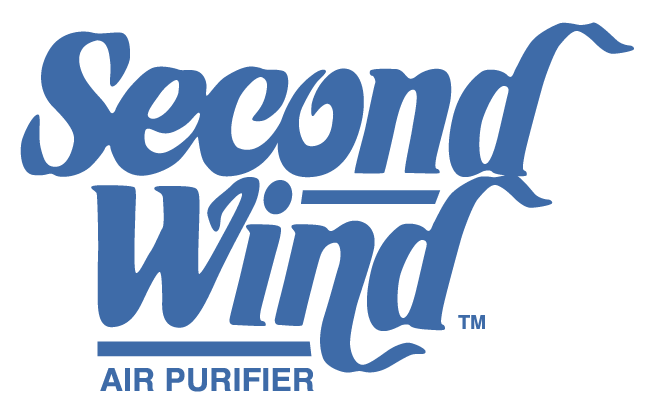VOCs, mold, asbestos, radon, carbon monoxide, and lead can pose serious health threats.
Americans spend a lot of our time indoors—up to 90 percent of it, according to the Environmental Protection Agency.
But while the quality of our outdoor air has improved over the past few decades, thanks to environmental legislation, indoor air quality hasn’t received the same attention and, arguably, has become worse over the same time, experts say. In fact, the concentration of air pollutants in your home can be two to five times higher than what’s typically found outdoors, according to the EPA.
That’s partly because advancements in the ways homes are constructed have made them better sealed than they were just a few decades ago. As a result, less fresh air seeps in from outside, making indoor air concerns—from long-known issues such as radon, asbestos, and carbon monoxide—potentially even more problematic. In addition, more frequent environmental disasters, such as floods and hurricanes, mean more people are confronting the dangers of mold, which lurks in moist places and can spread through a home’s air ducts.
And there are other problems we’re just beginning to realize are hazards. For example, the gas stove is now being viewed as a possible source of toxicity in the form of nitrogen dioxide, and new tests from Consumer Reports confirm that this can indeed be a serious concern.
At the same time, the COVID-19 virus, which is transmitted by air, has made many of us far more aware of how important it is to monitor indoor air quality. “People are learning the lexicon—from what HEPA filters are to knowing about the importance of air changes per hour,” says Richard Corsi, PhD, dean of the College of Engineering at the University of California, Davis. (Read more about air purifiers and COVID-19.)
Indeed, when asked about sources of indoor air pollution, such as radon and cooking gas, 60 percent of Americans said they were at least mildly concerned about at least one of them in their home, and 19 percent were very concerned, according to a July 2022 CR nationally representative survey (PDF) of 2,125 U.S. adults.
Fortunately, there is more information about how to handle indoor air quality problems than ever before, and there are more resources to help you address these and other health hazards in your home, including lead in paint or water. Here we explain some of the biggest concerns and help you determine whether they are a problem in your home. If they are, read on for our advice about how to mitigate or eradicate them, and recommendations for products that help do the job.
VOCs
Who’s at risk: People who have new furniture in their homes or who use harsh chemical cleaners.
What they are: VOCs, or volatile organic compounds, are gases emitted from paints, cleaning products, refrigerants, pesticides, aerosols, air fresheners, and more. “A lot of the chemicals used in things like couches and carpets in the home” emit VOCs, Corsi says. They can irritate your throat, nose, and eyes; cause headaches, dizziness, and nausea; and even damage internal organs. Certain VOCs, such as formaldehyde and benzene, are proven or probable human carcinogens.
Where they hide: VOCs can be harmful not only when they’re breathed in as gases but also, in some cases, when they’re “absorbed into particles of house dust and are deposited on a floor or surface,” Corsi says. “When that dust becomes disturbed and airborne, you can inhale it.”
How to find and fix them: First, reconsider some of the harsh chemicals, such as glass and floor cleaners, that you use in the home. How many are truly necessary? When you do need to use them, open the windows. Consider buying mattresses and furnishings that use natural fibers and fillings, such as cotton down, when you can. Look for ways to reduce your use of pesticides inside and outdoors.
In addition, control dust using a vacuum cleaner or an air purifier, or both, with a HEPA filter. That’s especially important if a pregnant person or young children are in the home; both are at risk for problems from VOCs. Another option: Use a damp mop on hard surfaces so that you don’t agitate the dust.
Mold
Who’s at risk: People whose homes are damp because of high humidity, poor ventilation, a leaky roof or basement, or damage from flooding.
What it is: A microscopic fungus that lives both outdoors and in, mold spreads via tiny airborne spores that can grow on almost any damp surface. Over a thousand types have been found in U.S. homes, according to the nonprofit National Center for Healthy Housing. Some mold (and mildew, another type of fungus) can cause skin rashes, flulike symptoms, eye and lung irritation, and other health problems.
Where it hides: Mold is most often found in damp areas of your home, such as the bathroom, the kitchen, and the basement. But it can also thrive under and in carpets or rugs, above ceilings, and in walls, cabinets, crawl spaces, attics, and any room where excessive moisture persists.
Mold can also contaminate your home’s air ducts, letting spores spread throughout your home every time the heating or air conditioning system runs. And homes can be especially susceptible to mold after catastrophic weather events such as hurricanes, floods, or deep freezes that cause pipes to burst.
How to find and fix it: Many mold problems can be seen with the naked eye, and many can be detected by their telltale musty odor. If you suspect mold but can’t see it, test for it. (Test kits are available at hardware stores and online.)
To mitigate mold, first find and fix the source of moisture, whether it’s a leaky roof, a poorly ventilated bathroom, or another problem. Then take steps to remove the mold, using water, detergent, or a disinfectant such as a diluted bleach solution, or by throwing away the mold-covered object.
The EPA recommends doing the job yourself if the mold-contaminated area is less than 10 square feet. Use protective equipment, such as an N95 mask, goggles, and gloves. (For more, see the EPA’s “A Brief Guide to Mold, Moisture and Your Home.”) Larger-scale problems may require professional remediation.
To prevent mold from returning, reduce your indoor humidity to between 30 and 60 percent, via better ventilation and dehumidifiers, if necessary.
You might be eligible for financial assistance from the federal government if your mold problem is the result of a recent weather disaster. For details, go to the Disaster Assistance Improvement Program website.
Asbestos
Who’s at risk: People with homes built before about 1980 who are renovating after damage or are remodeling.
What it is: A naturally occurring mineral fiber that’s corrosion- and heat-resistant, asbestos has been used for decades in a range of home products, from the insulation around heating ducts in basements to the asphalt tiles on roofs. Inhaling these tiny fibers, which can be 1/500 the width of a human hair, can trigger mesothelioma, a type of cancer, and the lung disease asbestosis. Symptoms frequently emerge decades after exposure. Because of these risks, asbestos is used far less often now than in the past. But it’s still thought to contribute to between 12,000 and 15,000 deaths each year in the U.S., according to an analysis by the Environmental Working Group Action Fund, a social welfare organization.
Where it hides: If your house or apartment was built in or before the 1970s, there’s a good chance that certain building materials contain asbestos because insulation frequently contained it. Some textured “popcorn” ceilings also contain asbestos, as do some hot water and steam pipe coatings, roofing and siding shingles, and the backing of some vinyl sheet flooring.
How to find and fix it: Asbestos in your home is generally a concern only if the material gets disturbed. So look for it if you are considering renovations that might disturb the material, or if the material was damaged, which can cause it to shed fibers. In those situations, hire a professional: Unless a material is labeled, you can’t tell that it contains asbestos by looking, and handling the material could dislodge fibers. If tests confirm asbestos, it should be sealed, covered, or removed by an asbestos abatement professional. You can often find licensed experts through your state’s health department.
Radon
Who’s at risk: People who have not had their home tested for radon and those who haven’t taken steps to reduce levels after a positive test.
What it is: Radon is a radioactive gas that’s emitted from soil, water, and rocks and seeps into homes. Almost 1 in 15 U.S. homes has a level that should be reduced, according to the EPA. Radon is deadly. It’s the second leading cause of lung cancer after smoking, causing 21,000 cancer deaths a year in the U.S.
Where it hides: The gas enters homes via cracks, holes, sumps, drains, and sometimes well water. It is found in every state, but some parts of the U.S. are more susceptible than others. (See the EPA’s map.)
How to find and fix it: The gas is colorless and odorless but still relatively easy to identify, says Joseph Allen, director of the Harvard Healthy Buildings Program in Boston. Everyone should test their home at least once. Tests, available at hardware stores and online, usually involve putting a detector in your basement or, if you don’t have a basement, on your first floor. Levels of 4 picocuries or more per liter need to be addressed. Depending on your home’s foundation type, that may involve hiring a certified contractor to seal cracks and openings, insert a pipe through the floor slab, and vent the gas out. Retest a month after the work is completed.
Mitigation can cost from $800 to $3,000, according to HomeAdvisor. Buying a home? Get it tested for radon and negotiate mitigation costs before sealing the deal. Some states and municipalities offer financial help for lower-income residents; contact your local health department for more information.








